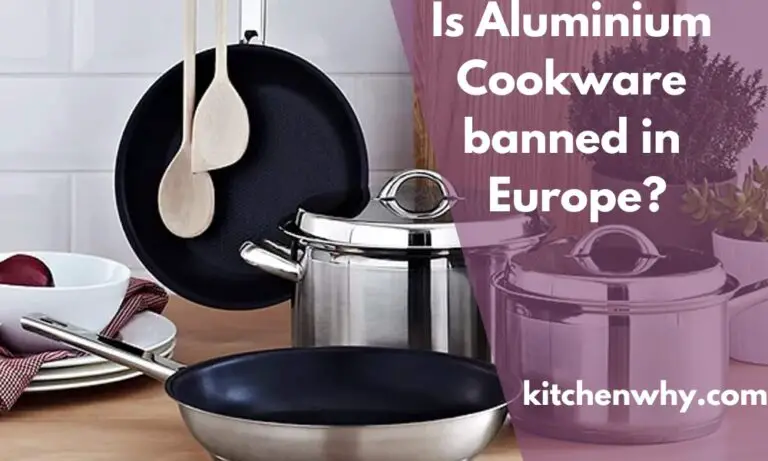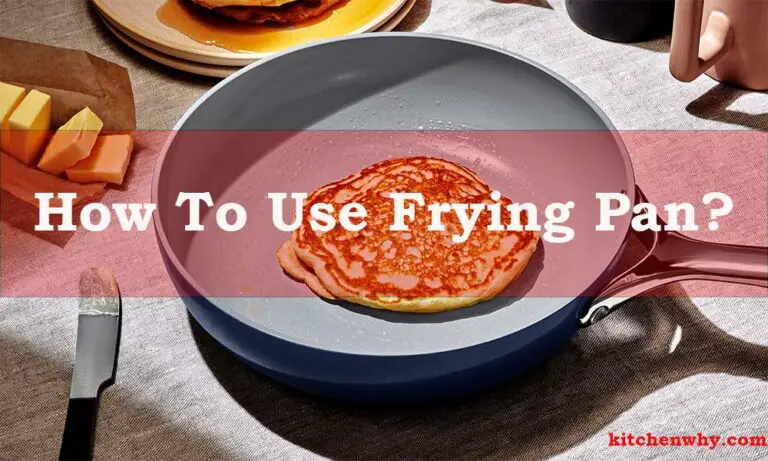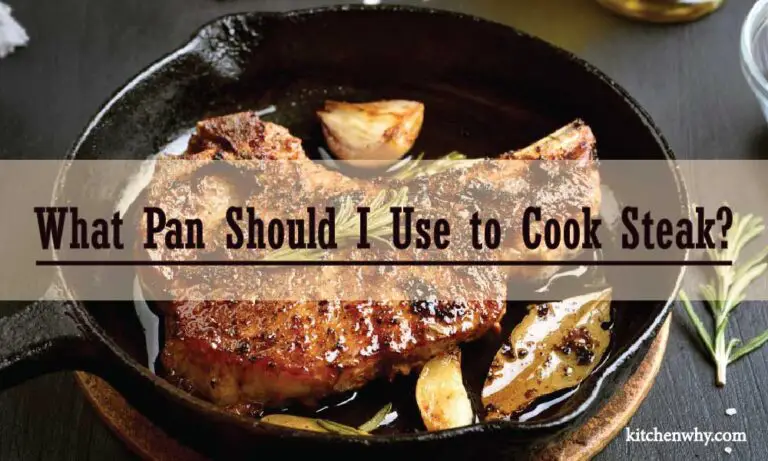Can You Put a Frying Pan in the Oven?Know The Truth

Whether you cook at home or work as a chef, oven safe pans can be a lifesaver. They are safe to use in ovens and reduce the risk of injuries when cooking. Besides, they are easy to use. So, Can you put a frying pan in the oven?
Yes, you can! Putting a frying pan in the oven allows you to heat the pan faster, which speeds up the cooking process. In addition, the heat from the oven also cooks the food more evenly, which results in a consistent and delicious meal.
Please read about the different types of oven safe pans you can choose from and how to cook with them safely in an oven. You will also know the pros and cons of using nonstick pans in an oven.
Following these simple steps, you can cook your food in record time and simultaneously reduce your environmental impact!
How Do You Know If the Frying Pan is Oven Proof?
It’s important to check if your frying pan is oven-safe before using it in the oven to avoid damaging the pan or causing a potential safety hazard. You can follow some tips given below:
- Check the bottom of the pan for a symbol or small letters to indicate if it’s oven-safe. You can find these on the handle, lid, and coating of the pan. The symbol could be a triangle with an oven-safe temperature inside or a safe baking symbol.
- Refer to the user manual or find it online if it’s not available. Look for specific information about safe baking temperatures for your pan in the product description on the retailer’s website.
- Lastly, verify if the handles, lid, and coating are oven-safe. Make sure that they’re made of durable material and can withstand high temperatures without breaking.
To avoid any fire hazard, always use oven-safe pans as directed. If you need help determining whether your frying pan is oven-safe, check with the manufacturer or look up cooking temperature on an online food safety tutorial.

Can You Put a Frying Pan in the Oven?
It depends on the type of frying pan you have. If your frying pan is made of materials safe for use in the oven, you can put it in the oven. However, if your frying pan has a plastic or wooden handles, those materials may not be oven-safe and could melt or catch fire.
Many metal frying pans, such as those made of stainless steel or cast iron, are oven-safe and can withstand high temperatures. You can use them in the oven to bake or roast dishes that require high temperatures.
However, it’s always a good idea to check the manufacturer’s instructions to ensure your frying pan is oven-safe before putting it in the oven. If you need clarification or need instructions, you can also do a quick online search to see if your specific frying pan can be used in the oven.
How to Put a Frying Pan in The Oven Safely?
You can place a frying pan in the oven by doing the following:
- Set the oven’s temperature as desired.
- Check to see if your frying pan is oven-safe. For information on whether your frying pan is safe for the oven, consult the manufacturer’s instructions.
- Get your desired food ready to cook in the frying pan. For instance, you should cook the food on the stove before using a frying pan to sear a steak or roast a chicken.
- Transfer your prepared food to the frying pan that is oven-safe. To prevent burning yourself, use potholders or oven mitts.
- To make it simple to remove the frying pan later, place it in the preheated oven with the handle facing outside.
- Set a timer for the amount of time recommended by the recipe or until the food reaches the appropriate degree of doneness.
- Use oven mitts or potholders to remove the frying pan from the oven once the meal has finished cooking.
- Before serving the food, turn off the oven and let the frying pan to cool down.
Is the Handle of the Frying Pan Detachable?
Pots and pans can be valuable tools in the kitchen that can help cook delicious meals. Ensuring that the pan you choose is safe in the oven is essential. Some pans have detachable handles that allow them to use in the oven safely. Others have riveted handles, which are more heat-tolerant and versatile.
If you need clarification on the handle of your pan, it is best to check with the manufacturer for safety guidelines. It would also be helpful if the skillet had a handle release button so the user can easily remove it from the stovetop without burning their hand. By taking these precautions, you can ensure that your pan is safe for use in the oven and save yourself time and hassle while cooking.
Is the Coating on the Frying Pan Heat Resistant?
The heat resistance of the coating on a frying pan depends on the type of coating used. Some types of coating, such as Teflon, are designed to be heat resistant and can withstand high temperatures up to around 500°F (260°C).
But safe use of nonstick cookware in the oven generally ranges from 350°F to 450°F. It’s important to ensure that the temperature doesn’t exceed this range as the coating can become damaged or start smoking at temperatures above 500°F.
Other types of coating, such as ceramic or nonstick coatings, can also be heat resistant but may have different temperature limits.
In addition to ensuring safe use in the oven, you should also keep an eye out for signs of damage, such as peeling or flaking.
Overall, it’s always a good idea to check the manufacturer’s instructions and materials used in the coating before using your frying pan in the oven to avoid any damage or safety hazards.
.
Which Pans Can You Put In The Oven?
Many types of pans can safely be used in the oven, including cast iron skillets, 100% ceramic pans, stovetop pans, steel pans, silicone pans, plastic pans, and nonstick pans.
Some typical materials used for oven-safe pans include cast iron, stainless steel, aluminum with a nonstick coating, and ceramic. Oven-safe pans are often labeled as such, but if unsure, you can check the manufacturer’s instructions or do a quick online search to determine if your pan is oven-safe.
A frying pan’s handle and lid materials play an important role in determining its heat tolerance. Some popular materials for handles include wooden handles, steel handles, silicone handles, plastic handles, and nonstick handles that are not oven safe.
Oven-safe pans are those that can be used on the stovetop as well as in the oven. They are made of safe materials such as metal, glass, ceramic, and silicone that can withstand high temperatures. They can be used for baking and frying.
Is Cast Iron Frying Pan Oven Safe?
You can use cast iron pans in the oven up to temperatures of 600°F. However, nonstick pans are safe up to 450°F on average. This is because nonstick pans contain chemicals that make them heat-resistant and create a coating that protects the pan from burning when exposed to high temperatures.
Cast iron pans, on the other hand, have a low chance of rusting or losing their seasoning over time. To ensure the longevity of your cast iron pan, ensure you care for it properly and do not use it in the oven without first pre-seasoning it. Instead, wash cast iron pans by hand with hot water and mild dish soap and allow them to dry before using.
Is Stainless Steel Frying Pan Oven Safe?
Pans made of stainless steel are safe to use in the oven as long as they are safe. However, nonstick pans with a PTFE coating are limited to an oven temperature of up to 500°F.
For best results, use a high-quality carbon steel frying pan for frying or simmering over high heat. At higher temperatures, copper or cast iron pans may be more effective.
The best stainless steel frying pan is thick to ensure heat is distributed evenly and the pan can handle high cooking temperatures.
Additionally, it should be free of rust and corrosion to prevent the safety of your food from being compromised.
Is Nonstick Frying Pan Oven Safe?
Not all nonstick frying pans are oven safe. It depends on the type of nonstick coating and the pan’s material.
Suppose the nonstick coating is made of PTFE (polytetrafluoroethylene, commonly known as Teflon). In that case, it is not safe to use in the oven at temperatures above 500°F (260°C) because the coating can start to break down and release toxic fumes.
However, some nonstick frying pans have a ceramic or diamond-infused coating that is safe to use in the oven at high temperatures. Always check the manufacturer’s instructions or packaging to see if the pan is labeled as oven safe, and what temperature limits there may be.
Some nonstick frying pans have removable handles that make them oven safe. Ensure to check if the handle is removable before using the pan in the oven, and follow any safety instructions the manufacturer provides.
Is Aluminum Frying Pan Oven Safe?
Aluminum frying pans are oven-safe as long as they are of high quality. They are usually oven-safe due to their high heat conductivity and anodized treatment.
But nonstick pans or pans with silicone or plastic handles should not be exposed to temperatures exceeding 350°F, as they may release harmful fumes.
Pans with nonstick coating should not be exposed to temperatures exceeding 570°F, as they may release harmful fumes.
Instead, these pans can be safely placed on the stovetop or oven at lower temperatures. These safe temperature ranges depend on the pan and its material.
Generally, aluminum frying pans can handle temperatures between 500°F and 1200°F; carbon steel frying pans can handle temperatures up to 1200°F.
Is Copper Frying Pan Oven Safe?
Copper frying pans are generally safe to use in the oven, but it depends on the specific type of copper frying pan and the handle’s material.
Most copper frying pans have stainless steel or cast iron handles that are safe to use in the oven at high temperatures. However, some copper frying pans have wood, plastic, or silicone handles that may not be safe for oven use.
It’s important to check the manufacturer’s instructions or packaging to see if the copper frying pan is labeled as oven safe and what temperature limits there may be. Some copper frying pans may have temperature limits or other precautions you should follow to prevent damage or injury.
Also, keep in mind that copper is a good conductor of heat, so the pan may heat up quickly in the oven and require less cooking time than you are used to with other materials.
Is Ceramic Frying Pan Oven Safe?
You can use ceramic pans in the oven with oven-proof handles. They are an excellent choice for both oven use and stovetop cooking since they can handle high temperatures. Most frying pans are oven-safe up to 350°F, so you can safely use them in your baking recipes.
However, nonstick pans with PTFE coatings should not be used in an oven above 500°F, as the coating may melt and create safety hazards.
Instead, use an oven-safe steel skillet or cast-iron skillet for cooking. These pans are safe up to higher heat levels and will leave your food evenly cooked and beautifully browned.
Can I put my Tefal frying pan in the oven?
Yes, Tefal pans are oven-safe and can cook food in the oven. However, it is important to follow safe oven usage guidelines. Nonstick pans are unsuitable for high heat oven use because they can quickly burn or melt.
Instead, choose an oven-safe frying pan based on materials, such as stainless steel or ceramic, that can handle high temperatures without melting or wearing down quickly. Some modern ceramic nonstick pans and some Teflon make cookware can go in the oven to specific temperatures.
Picking the right nonstick pan for your needs will depend on factors such as cost and type of cooking. For example, you may not need a high-quality nonstick skillet if you only use your nonstick pan for stovetop cooking. Using your nonstick pan frequently would be worth spending extra money for a quality product that will last longer and perform better.
Conclusion
Whether or not you can put a frying pan in the oven depends on several factors, such as the type of material the pan is made of, the type of nonstick coating on the pan, the temperature, and the type of handle it has.
Most stainless steel, cast iron, and copper frying pans are safe in the oven, but some nonstick frying pans with PTFE coatings are unsafe at high temperatures.





